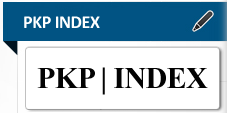Pemodelan Aliran Awanpanas (Aliran Piroklastik) Sebagai Data Pendukung Peta Kawasan Rawan Bencana Gunungapi (Studi Kasus Gunungapi Sinabung Sumatra Utara) Pyroclastic Flows Modeling as a Supporting Data for Volcanic Hazard Map (case study Sinabung Volcano-North Sumatra)
Abstract
ABSTRAK Indonesia mempunyai 127 gunungapi aktif dan berdasarkan sejarah erupsi 67 di antaranya merupakan gunungapi berbahaya. Erupsi gunungapi memiliki risiko merusak dan mematikan tidak hanya bagi masyarakat yang bermukim disekitarnya tapi juga menyebabkan bencana bagi masyarakat luas. Salah satu bahaya primer erupsi gunungapi adalah aliran awanpanas, produk erupsi gunungapi yang sampai saat ini paling banyak menyebabkan jatuhnya korban jiwa, untuk itu diperlukan suatu simulasi/pemodelan untuk mengetahui pola aliran awanpanas guna mendukung penentuan Kawasan Rawan Bencana (KRB) erupsi gunungapi. Simulasi/pemodelan aliran awanpanas ini dibuat berdasarkan data Model Elevasi Digital (DEM) dan memanfaatkan aplikasi Sistem Informasi Geografis (GIS), dengan output berupa representasi dinamis dari kecepatan aliran awanpanas, ketebalan deposit, dan daerah terdampak, dengan studi kasus Gunungapi Sinabung Sumatera Utara. Setelah erupsi terakhir 1200 tahun lalu (sutawidjaja, 2013), peningkatan aktivitas Gunungapi sinabung ditandai dengan terjadinya letusan freatik pada periode Agustus-September 2010. Setelah 3 tahun beristirahat, aktivitas erupsi kembali terjadi sejak September 2013 hingga saat ini. Aktivitas erupsi berupa pertumbuhan kubah lava dan luncuran awanpanas telah mengakibatkan jatuhnya korban jiwa serta memaksa penduduk mengungsi menjauhi daerah bahaya. Simulasi/pemodelan aliran awanpanas Gunungapi Sinabung karena runtuhnya kubah lava dibuat ke berbagai arah dengan skenario volume kubah lava ; 1, 2 dan 3 juta m3 . Hasil overlay antara daerah landaan awanpanas dengan skenario 3 juta m3 pada Peta KRB menunjukan jangkauan aliran awanpanas pada sektor tenggara, barat dan timurlaut telah sedikit melewati batas KRB III (kawasan sangat berpotensi terlanda awan panas, aliran lava, guguran lava dan gas beracun). Kata kunci : awanpanas, Simulasi/model, titan2d, KRB
ABSTRACT Indonesia has 127 active volcanoes and based on historical eruption, 67 of them are dangerous. Volcano eruption having destructive risk and deadly, not only for the people who lived around, but also caused disaster for large society. One of the primary danger of volcano eruption is the pyroclastic flow, volcano eruption products that until recently was the most caused the loss of life, therefore necessary creating a simulation/modeling to know pyroclastic flow pattern to support of a determination the Volcanic hazard map. Pyroclastic flow Simulation/modeling is made based on the Digital Elevation Model (DEM) data and using Geographical Information System (GIS) application, with output of representation dynamic from the pyroclastic flow velocity, the thickness of deposit, and affected areas, with case Sinabung Volcano in North Sumatra. Since lates eruption about 1.200 years ago, Increased activity Sinabung volcano started by phreatic eruptions during August – September 2010. After three years of rest, eruption activity occurs again on September 2013 until today, with lava dome growth and pyroclastic flow acitvity have caused casualties and forcing residents were being evacuated away from the danger area. The pyroclastic flow simulation/modeling due the lava dome collapse is made into various directions with scenario of lava dome volume ; 1, 2 and 3 million m3 . The results of overlay between areas affected by pyroclastic flow model with scenario 3 million m3 and volcanic hazard map showed the range of pyroclastic flow to the southeast, west and northeast sector reached the limit of zone III at volcanic hazard map (Very potentially affected by pyroclastic flow, lava flow, lava avalanche, and toxic volcanic gas ). Keywords : pyroclastic, simulation/modeling Titan2D, volcanic hazard map
Full Text:
PDFDOI: http://dx.doi.org/10.34126/jlbg.v8i1.164
Refbacks
- There are currently no refbacks.

This work is licensed under a Creative Commons Attribution-NonCommercial 4.0 International License.









